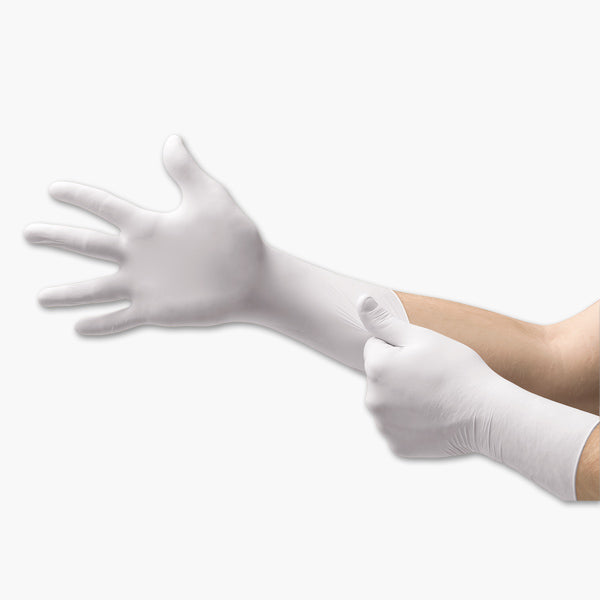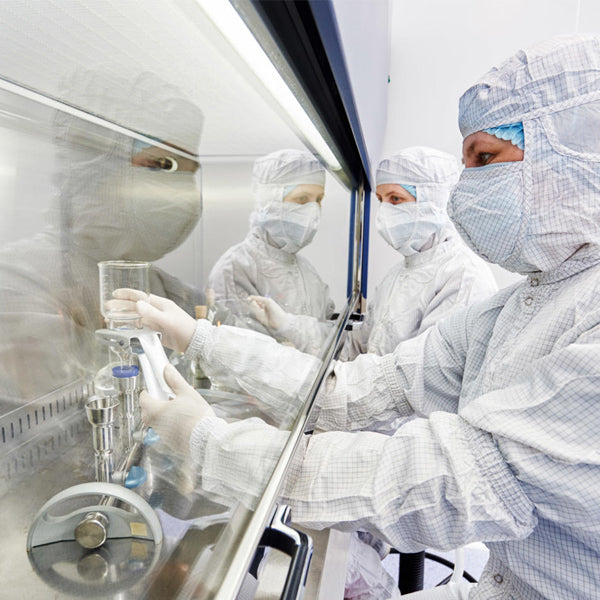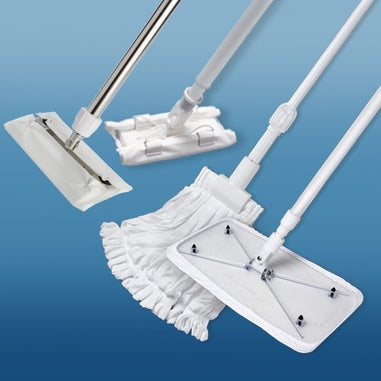- No products in the cart.
In the world of cleanroom environments, precision and contamination control are paramount. Whether you are working in pharmaceuticals, biotechnology, electronics manufacturing, or any other industry that demands a sterile atmosphere, selecting the appropriate gloves for the task is critical. Sterile cleanroom gloves serve as the first line of defense against contamination, and choosing the right pair is an intricate process. In this comprehensive guide, we will take you through the key factors to consider when selecting sterile cleanroom gloves, including materials, glove types, and sterile packaging options, to ensure that your choice aligns with the specific requirements of your cleanroom tasks.
Understanding the Importance of Sterile Gloves
Cleanrooms, which range from ISO Class 1 (the cleanest) to ISO Class 9 (the least clean), demand an exceptionally low level of contamination. In such environments, even the smallest particles, microbes, or residues can compromise the integrity of sensitive products, experiments, or processes. Sterile gloves are a vital component of cleanroom personal protective equipment (PPE) designed to minimize the introduction of contaminants from the wearer.
These gloves are not only critical for protecting the products or processes within the cleanroom but also for safeguarding the user from exposure to hazardous substances, biological agents, or potential contaminants. They must be chosen with careful consideration to ensure compatibility with the cleanroom's specific requirements and the tasks being performed.

Selecting the Right Sterile Cleanroom Gloves
-
Material Matters: Sterile cleanroom gloves come in a variety of materials, each with its own set of characteristics and suitability for different tasks. The most common materials include:
-
Latex Gloves: Latex gloves offer excellent tactile sensitivity and fit, making them ideal for delicate tasks such as pharmaceutical and biotechnology applications. However, it's crucial to note that latex allergies can be a concern for both the wearer and the environment, so alternatives are often preferred.
-
Nitrile Gloves: Nitrile gloves are a popular choice due to their resistance to punctures, chemicals, and allergens. They are commonly used in a range of cleanroom applications, including electronics manufacturing, pharmaceuticals, and biotechnology.
-
Vinyl Gloves: Vinyl gloves are cost-effective and are suitable for tasks where chemical resistance is not a primary concern. They are often used in ISO Class 7 and 8 cleanrooms.
-
Neoprene Gloves: Neoprene gloves are known for their resistance to a broad spectrum of chemicals, making them suitable for tasks involving hazardous substances. They are frequently used in the pharmaceutical and biotechnology industries.
-
-
Glove Types for Specific Tasks: Cleanroom gloves come in various styles to meet the requirements of different tasks. Some common types include:
-
Exam Gloves: These gloves are used in pharmaceutical, biotechnology, and medical applications. They are typically single-use and are available in different materials and sizes to ensure a secure fit.
-
Sterile Surgical Gloves: Used in cleanrooms where invasive procedures are conducted, such as tissue culture labs and hospitals within cleanroom facilities.
-
Cleanroom Gloves with Textured Fingertips: These gloves provide an improved grip for intricate tasks, like handling small components or performing detailed assembly work in electronics manufacturing.
-
Cleanroom Gloves with Beaded Cuffs: Beaded cuffs help prevent roll-down and ensure that gloves stay securely in place, which is crucial when working in critical cleanroom environments.
-
-
Sterile Packaging Options: Sterile gloves should be packaged in a way that maintains their sterility until they are ready to be used. Common packaging options include:
-
Individually Wrapped Gloves: Gloves are individually sealed in sterile packaging, ensuring that each pair remains uncontaminated until opened.
-
Bulk Packaging: Gloves are packaged in larger quantities, suitable for applications where sterile conditions are maintained during the entire process. Users should exercise additional care to maintain the sterility of the gloves when using bulk packaging.
-
-
Glove Size and Fit: Proper glove sizing and fit are essential for comfort and dexterity. Ill-fitting gloves can lead to discomfort, reduced productivity, and potential contamination risks. Manufacturers provide sizing guidelines to help users choose the right size, and it's advisable to measure your hand as instructed before making a selection.
-
Cleanroom Classification: Consider the specific ISO classification of your cleanroom when selecting gloves. For example, higher ISO cleanroom classes may require more stringent glove materials and handling procedures to meet contamination control standards.
-
Chemical Compatibility: If your cleanroom tasks involve contact with chemicals, ensure that the chosen gloves are compatible with the substances you'll be handling. Review the glove material's chemical resistance properties to prevent any unwanted reactions or degradation.
-
User Comfort and Dexterity: The comfort and dexterity of the gloves are paramount for user satisfaction and productivity. Make sure the gloves allow for precise and efficient work while maintaining a comfortable fit for extended periods.
-
Allergen Sensitivity: Be aware of potential allergen sensitivities that could arise from certain glove materials. If allergies are a concern for either the wearer or the cleanroom's product or process, alternative materials should be considered.

Top Recommendations of Sterile Gloves
When it comes to making informed choices for sterile cleanroom gloves, we recommend considering two exceptional options: the Techniglove STN200P gloves and the Ansell TouchNTuff 83-500 sterile Polyisoprene Gloves.
Techniglove STN200P gloves are the go-to choice for tasks where puncture resistance and a secure grip are essential, such as pharmacy compounding and electronics manufacturing. These Sterile nitrile gloves offer outstanding durability and come individually packaged to maintain sterility, ensuring they meet the strictest cleanliness standards in high-risk environments.
For applications in pharmaceutical and biotechnology cleanrooms, the Ansell TouchNTuff 83-500 gloves are a compelling alternative. Made from polyisoprene, these gloves provide a latex-like fit and feel, enhancing user comfort and dexterity. Individually wrapped for guaranteed sterility, they are the ideal pick for tasks demanding precision and protection against contamination. These recommendations cater to a range of cleanroom needs, helping you maintain the integrity of your cleanroom environment while ensuring the safety of both your products and personnel.
Matching Gloves to Cleanroom Tasks
Once you've considered all the factors mentioned above, it's time to match the gloves to the specific cleanroom tasks:
-
Pharmaceutical and Biotechnology Cleanrooms: Nitrile gloves are a popular choice due to their chemical resistance and suitability for delicate tasks. They are often packaged individually to maintain sterility.
-
Electronics Manufacturing: Nitrile gloves with textured fingertips provide an excellent grip for handling small components, while latex gloves are suitable for precise tasks. Beaded cuff gloves help ensure they stay in place during intricate assembly work.
-
ISO Class 5 or Higher Cleanrooms: Consider sterile gloves with advanced packaging and stringent sterility measures to meet the strict cleanliness requirements of these cleanrooms.
-
Hazardous Material Handling: Neoprene gloves are a wise choice for cleanrooms that deal with hazardous substances due to their chemical resistance properties.
Conclusion
In conclusion, the selection of sterile cleanroom gloves is a crucial decision in maintaining the integrity of cleanroom environments. By considering factors such as material, glove type, packaging, fit, and the specific requirements of your cleanroom tasks, you can ensure that your choice aligns with contamination control standards and enhances both product protection and user safety. Remember that each cleanroom is unique, so it's essential to conduct a thorough assessment of your cleanroom's needs before making a final decision.
For over 40 years, Lab Pro Inc. is your steadfast source for premium cleanroom lab supplies, hand tools, lab equipment, chemicals, and PPE apparel. Trusted by aerospace industries, medical device companies, and laboratories globally, we epitomize exceptional quality in every product. Experience the convenience of next day service in California. Contact us online or at 888-452-2776 to explore solutions tailor-made for the laboratory industry. Elevate your experiments with Lab Pro Inc. – your partner in precision and excellence.












































